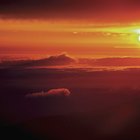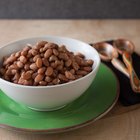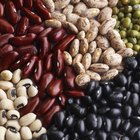
Solar cookers are a relatively modern invention that first appeared towards the latter half of the 20th century. With the ability to utilize the sun’s UV radiation and use it to cook food, it is one of the most energy efficient and environmentally friendly manners of cooking available. Although there are many positive aspects to solar cookers, they are not without their drawbacks.
Night Use
Since the cooker operates off of UV rays, an obvious drawback is cooking times. Solar cookers can’t be used at night and are very difficult to use during the evening when the sun is not at its highest point in the sky—which is one of the most common times for outside cooking.
Size
Many solar powered cookers are large and bulky to carry; therefore, their use is often limited to one spot. Campers who enjoy the benefits of solar cookers can purchase "backpack versions" since they lack the need for power, but carrying it can be very tedious work.
Sunlight During The Day
Even for those attempting to cook during the middle of the day, it can still be a difficult process. Cooking must be done in very well lit areas and away from clouds. If you are in a place with lots of trees, you must find an open area away from the shade. It is also more difficult to cook in geographic locations that offer less sunlight. During the wintertime, UV rays can be be reduced by up to 50 percent; therefore, solar cookers are also limited to only the warmer months of the year.
Backpack Solar Cookers
For those who travel, there are smaller backpack solar cookers. Although still bulky, they are much more manageable to carry. Due to their smaller size there is much less of an area on the cooker to utilize the sunlight—meaning that they take longer to cook than traditional solar cookers.
Related Articles

Solar Cooker Facts

Appliances That Use Solar Energy

How to Get a Natural Tan in the Winter

Kinetic Watches Vs. Eco-Drive Watches
Steaming vs. Pressure Cooking for ...

Is it Better to Tan With or Without ...

The Disadvantages of Passive Solar ...

How to Cook Rice Without a Rice Cooker

How to Cook Pinto Beans in a Crock Pot

The Difference Between a Chafing Dish & ...

Why Does Food Cook Faster in a Pressure ...

Uses of Macadamia Nut Shells

Casio Tough Solar Instructions

Are Halogen Heat & Infrared Waves Safe ...

Time Required to Cook Beans in a Crock ...
How to Cook With a Reverse Flow Smoker

How to Use a ReliOn Humidifier

Does a Roaster Oven Cook Faster Than ...

What Are the Benefits of Vinyl Fabric?
How to Cook With an Hibachi Barbecue
References
Writer Bio
Steve Johnson is an avid and passionate writer with more than five years of experience. He's written for several industries, including health, dating and Internet marketing, as well as for various websites. He holds a bachelor's degree from the University of Texas.
Photo Credits
Sun image by KPICKS from Fotolia.com